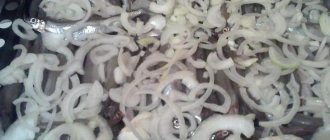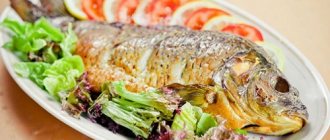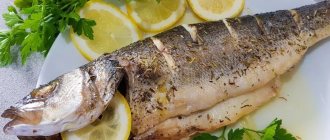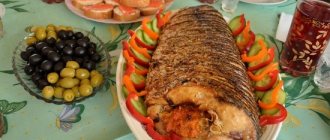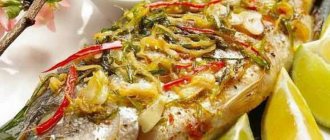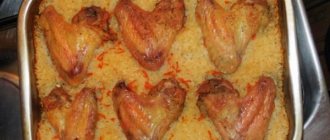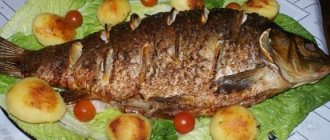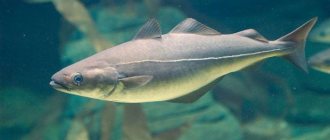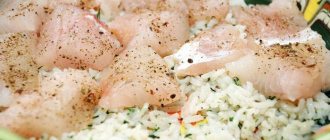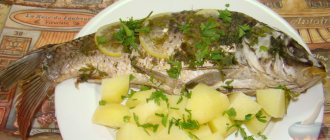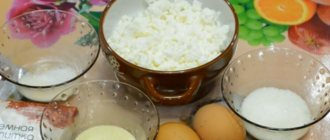It reaches a length of 0.75 m, weighing up to 8 kg. It is found in the rivers of Siberia, desalinated bays of the Arctic Ocean, and in lakes on the Taimyr Peninsula. It is most numerous in the Ob-Irtysh basin, where the catch exceeded 1.5 thousand tons. The diet consists of mollusks and benthic crustaceans. Spawns in autumn, October - November. In spring, the larvae roll down from spawning grounds into lower reaches of rivers and estuaries.
The number of muksun has been sharply declining in recent years due to massive poaching, especially in the Gulf of Ob and during the spawning migration period. Muksun is an object of artificial reproduction and commercial fish farming.
Links
Wikimedia Foundation.
2010. Synonyms
:
See what “Muksun” is in other dictionaries:
- MUKSUN, mutsun, ma(o)ksun husband. Siberian whitefish, Salmo muxun, humpback whitefish, fish similar to dumplings, and even more like shokur or whitefish. Muksun, new, related to it, prepared from it. Muksunnik, lover of muksun; muksunniks, deer, ... ... Dahl's Explanatory Dictionary
Whitefish, salmon family. Dictionary of culinary terms. 2012 ... Culinary Dictionary
MUKSUN, migratory fish (whitefish family). Length up to 75 cm, weight up to 8 kg. Lives in the desalinated waters of the Arctic Ocean. Spawning in rivers. On the Taimyr Peninsula there is a lake form. A valuable object of fishing and breeding... Modern encyclopedia
Migratory fish of the whitefish genus. Length up to 75 cm, weighs up to 8 kg. In the desalinated waters of the North. Arctic approx. Spawning in rivers. On the Taimyr Peninsula there is a lake form. A valuable object of fishing and breeding ... Big Encyclopedic Dictionary
MUKSUN, muksuna, husband. Same as Maksun. Ushakov's explanatory dictionary. D.N. Ushakov. 1935 1940 ... Ushakov's Explanatory Dictionary
MUKSUN, ah, husband. Northern freshwater fish related to whitefish. Ozhegov's explanatory dictionary. S.I. Ozhegov, N.Yu. Shvedova. 1949 1992 ... Ozhegov's Explanatory Dictionary
— (Coregonus muksun), semi-anadromous fish of the whitefish genus. Dl. up to 75 cm, weight up to 8 kg. The top, jaw is longer than the bottom. Gill rakers 44 65. Lives in desalinated and recent waters of the North. Ledovitogo ca.; goes to spawn in the rivers of Siberia (from Kara to Kolyma).... ... Biological encyclopedic dictionary
A fish of the whitefish family, found in the Arctic Ocean and northern rivers. Dictionary of foreign words included in the Russian language. Chudinov A.N., 1910 ... Dictionary of foreign words of the Russian language
Exist., number of synonyms: 2 fish (773) whitefish (10) ASIS Dictionary of Synonyms. V.N. Trishin. 2013 ... Dictionary of synonyms
Muksun
— MUKSUN, migratory fish (whitefish family). Length up to 75 cm, weight up to 8 kg. Lives in the desalinated waters of the Arctic Ocean. Spawning in rivers. On the Taimyr Peninsula there is a lake form. Valuable object of fishing and breeding. ... Illustrated Encyclopedic Dictionary
Books
- Yamal Rhapsody, . Many people see the North as a distant and inaccessible land. Some people find him cold and unfriendly. For others, the North attracts and beckons with its mystery, eternal mystery and vast expanses.…
Muksun is a semi-migratory fish from the order of whitefish, which is famous for its high commercial value.
General information about the species.
Muksun is characterized by an elongated body, covered with slightly silvery, tightly adherent scales of small size. The color of the muksun's back is dark, but its belly is light. There has been a recorded case of catching muksun weighing over 13 kg, but on an industrial scale, individuals weighing no more than 2-3 kg are more common. Muksun is a delicacy, and its rather dense and fatty meat is excellent for preparing stroganina.
Area of residence.
Muksun lives in Siberian rivers (in Russia, it is most widespread in the Ob-Irtysh region) and inflows of the Arctic Ocean, but the geography of its residence extends beyond the borders of the Russian section of the Arctic region.
Muksun feeds in the coastal areas of the Arctic Ocean, where it goes upstream to spawn against the flow of rivers. Along the Ob River, muksun is able to travel as far as the Novosibirsk region, but predominantly muksun enters relatively short distances.
Features of the catch.
The main way to catch muksun is from a boat in the warm season. It is best to fish in this situation at night. When a powerful spotlight is directed into the water, crustaceans and small waterfowl insects will come towards it, and fish, including muksun, will swim after them. You will only need to forcefully pull the fish one after another.
Regardless of the period of the year, the most suitable bait for catching muksun will be the one that resembles its natural food - small crustaceans. It is recommended to either purchase a bait of red or bright orange color, but there is no need to chase plausibility at all. But in general, muksun is a completely unpredictable fish. Sometimes he won't bite at all on a super productive and expensive bait, but with a simple piece of red plastic you can pull out enough fish.
In addition, those baits that did not give the expected effect on one corner of the river can be much more successful on another corner. One might conclude that it all depends on the current preferences of a particular school of muksun. That is, as a result, everything is calculated by the good old method of trial and error combined with the instincts of a real fisherman.
The main diet of the muksun consists of various kinds of underwater insects, and therefore it is successfully caught with a fly. Muksun is picky about artificial baits, so it is recommended to visit reservoirs with sufficient variety and supplies in order to select the most effective bait on the spot. The muksun's diet also includes mollusks, bottom crustaceans and zooplankton.
When fly fishing, you need to cast parallel to the shore, especially in lake fishing situations, and then reel in the bait (usually a wet fly). For the purpose of the experiment, it is recommended to gut the first representative of the muksun caught in order to become familiar with the contents of its stomach in order to choose the bait you like best.
Classically, muksun fishing in Siberia is carried out using industrial methods. In recent years, the number of this fish has decreased significantly, and fishing for muksun in most regions of the North is completely prohibited or quite limited.
Catching muksun in winter.
In winter, muksun are also caught with a fly, which can be chosen experimentally. Simply put, catching muksun with the usual amateur gear is quite difficult and has not become widespread due to the rarity of this type of fish.
The fish of northern rivers are famous for their excellent gastronomic qualities. The leading position belongs to the extensive salmon family (Salmonidae), among which there are freshwater and anadromous species. Marketing popularity is typical for trout and pink salmon, but the real delicacy is muksun (northern whitefish) with very tasty, tender, moderately fatty meat and a minimal amount of intermuscular bones.
The whitefish genus (Coregonus) contains more than 60 taxa. They all prefer running cold water, so they avoid areas with long hot summers. An exception is the European vendace (Kilets, ripus), which, due to its small size (12-20 cm), is able to cope with significant warming of the reservoir.
Northern muksun fish (Coregonus muksun) is a typical cold-loving representative of taiga rivers. The closest relatives are omul, whitefish (cheek), various whitefish, tugun, peled (cheese). Leads a freshwater lifestyle, but tolerates lightly salted water well. Regularly makes long feeding migrations to desalinated bays. The most intense movement occurs during strong spring floods, caused by the accelerated melting of large amounts of snow.
The species is characterized by significant dimensions. Regular catches include young specimens 30-40 cm long and weighing 1.5-2.0 kg. But often you come across trophy adult specimens weighing 5-8 kg. The largest muksun weighed 13 kg with a body length of 90 cm. In the size hierarchy of the salmon family, the whitefish genus occupies an intermediate position between the constituent predatory taxa, which weigh 20-80 kg (taimen, chinook salmon, nelma) and medium-sized grayling subspecies with a maximum weight of 2. 5-2.7 kg.
What does muksun fish look like?
The northern whitefish has an elongated, slightly laterally compressed body with a raised caudal peduncle. Other exterior features of the species include:
- presence of an adipose fin;
- head extended forward;
- silver-gray body color and dark blue or ash back with an expressive hump in adults;
- pointed snout with a lower position of the mouth;
- weak scales of medium size (87-107 pieces in the lateral line);
- enlarged upper jaw (2-3 times the width);
- light pressed abdomen;
- increased number of gill rakers (up to 60-65).
Muksun (Coregonus muksun)
. Muksun is one of the most valuable northern commercial fish of the whitefish family. Muksun lives in almost all major rivers of Siberia - Ob, Irtysh, Yenisei, Lena. Muksun reaches a length of 0.75 meters and a weight of up to 8 kg. Occasionally it even reaches 13 kg in weight, but its usual weight is 1-2 kg. Muksun weighing 3-4 kg is already considered large and northern peoples do not hesitate to exchange such a muksun for a pound one. The body of the muksun is elongated, laterally compressed. The muksun differs from the nelma by its steeply raised body behind its head. The back of the muksun is dark, the sides are silvery, and the belly is light white.
Muksun
refers to semi-anadromous fish, and, therefore, migrates for spawning. This semi-anadromous whitefish feeds in the desalinated coastal waters of the Arctic Ocean, from where it goes to spawn in the Kara, Ob, Yenisei, Lena and Kolyma, rising quite high upstream. Unlike nelma, which enters almost all major tributaries of large rivers to spawn, muksun is very selective about tributaries and does not rise high along the tributaries.
For example, on the Tom River the spawning pits of muksun are located at the mouth of the river and slightly upstream. A hundred years ago, muksun moved up the Tom River much higher upstream, and the quantity of this fish in the Tom River was such that Tomsk residents were even called “muksunniks.” But the muksun does not enter such large tributaries of the Ob as Chulym or Ket, and if it is caught, it is only by accident and, as a rule, not far from the confluence of these rivers with the Ob.
Muksun in the sea feeds on amphipods, mysids and sea cockroaches. The composition of muksun's food is varied and depends on the time of year. In summer, muksun mainly feeds on mollusks and benthic crustaceans, while in winter the main diet is zooplankton.
The spawning run of muksun begins immediately after the ice drift. Muksun reaches the spawning grounds from the sea only in the fall - at the end of September and beginning of October. Muksun spawning begins during the period of ice formation, usually in October, and ends in November, when the water temperature drops to 4 C°. Spawning occurs on riffles with flagstone and pebble bottoms.
Whole muksun baked in the oven
- muksun – 1-1.2 kg;
- tomatoes – 150 g;
- onions – 100 g;
- salt, fish seasonings - to taste;
- refined vegetable oil – 20 ml.
- Clean and gut the thawed muksun. Rinse the carcass and dry with a napkin. Cut out the gills, cut off the fins. Rub the fish inside and out with a mixture of salt and seasonings.
- Wash the tomatoes and pat dry with a napkin. Cut into thin halves of circles. You need to chop tomatoes with a sharp knife, ideally a special one with fine teeth. It is important that the skin is cut easily, otherwise you will squeeze out a lot of juice from the vegetables.
- Peel the onion and cut into thin half rings.
- Place a layer of onion in the belly of the muksun, and a layer of tomatoes on it. So, alternating vegetables, fill the belly of the fish completely with them.
- Fold the foil in half and grease with oil. Place the muksun carcass on it and pack it well.
- Preheat the oven to 200 degrees.
- Place the foil package on a baking sheet and place it in the oven.
- Bake the carcass for 40 minutes. 10 minutes before cooking, unwrap the foil to brown the fish.
When serving, garnish the dish with slices of fresh tomatoes and sprigs of herbs. Lemons are not necessary in this case, since muksun does not have a specific odor that needs to be neutralized.
Muksun - fishing methods, bait
Fishing for muksun is prohibited in many regions of Siberia. And where it is allowed, muksun are caught with commercial fixed nets or floating nets. On the Lena, muksun are caught using flies in winter. Muksun feeds on a wide variety of underwater insects, which means you need to make a lot of midges - the muksun will definitely like some kind of fly.
Experienced fishermen make artificial baits that really look very similar to insects and amphipods, but even they cannot always guarantee that their “work of art” will be liked by muksun. Often, flies made of bright red, burgundy or orange colors, with a bright appendage and plumage, are taken more readily by the muksun than a fly that exactly replicates the appearance of the insect, despite the fact that such an insect is the main food for the muksun in this body of water.
Sometimes one can only marvel at the whims and preferences of the muksun. This often happens when a maksun swims past a live drill mounted and located nearby and greedily grabs an artificial fly “under the drill.” Some fishermen, especially not very experienced ones, have the opinion that there are special secrets to making good and catchy flies. But more experienced ones will argue that some simply make the front sight more similar to the real object.
Ingredients and how to cook
ingredients for 5 servings or - the number of products for the servings you need will be calculated automatically!'>
Total:
| Composition weight: | 100 gr |
| Calorie composition: | 42 kcal |
| Belkov: | 1 g |
| Zhirov: | 0 g |
| Carbohydrates: | 10 g |
| Used: | 9 / 0 / 91 |
| H 100 / C 0 / B 0 | |
Cooking time: 1 hour 50 minutes
Muksun - the standard of taste and usefulness
Muksun is one of the most important commercial fish in Siberia; its catches are measured in tens of thousands of centners. Lake forms of muksun living in the Norilsk lakes have also been described.
The most high-calorie freshwater fish - muksun - can easily be called an energy cocktail - the average calorie content of muksun meat is 89 kcal per 100 grams of meat. Dense, medium-fat meat (up to 10% fat content) is digested quickly and almost completely - up to 98%. The body's expenses for digesting this meat are negligible and therefore muksun is a fish for people weakened by a long illness and those recovering. A large amount of arachidonic acid (up to 0.4%) helps the body and healthy people, for example, cope with high physical activity.
The nutritional qualities of muksun are close to those of marine commercial fish. However, many marine fish that have similar nutritional value to muksun contain excess mineral salts in their meat, which are harmful for people with kidney disease, mineral metabolism disorders, and the elderly. But muksun is not only nutritious, but also safe in this regard, since the mineralization of its meat is much lower than usual due to the high density of the meat.
An important property of muksun meat is the presence in it of such rare microelements as bromine - 15-30 mcg and copper - 110-115 mcg. Bromine is an essential element of a healthy nervous system, and copper is necessary for the normal process of hematopoiesis.
In winter, it gives Siberian fishermen pleasure in taste and energizes them. It is noteworthy that muksun meat is not infected with opisthorchid larvae and is therefore suitable for introducing this unusual dish - stroganina. Of course, stroganina is frozen only from freshly caught muksun or subjected to special freezing. Fish soup and their muksun cutlets are also traditional dishes of the inhabitants of the north.
The presence of a special kind of amines - proteins, gives muksun meat a memorable smell - like a fresh, just picked cucumber. After special deep freezing, the aroma is preserved, but loses its intensity. And yet, even defrosted muksun is a real delicacy for fish connoisseurs, as well as those whose bodies need complete and light food.
Muksun has not only an unforgettable taste, but also a unique smell, unusual for fish. All this is due to the unique chemical composition of meat. It is a unique source of energy for athletes and can be consumed even by people with kidney problems.
Muksun has not only an unforgettable taste, but also a unique smell, unusual for fish
The rich salmon family contains many valuable species of fish. One of them is muksun, which belongs to the whitefish genus and is valued most among its relatives.
The fish has a spindle-shaped appearance: the body is elongated, with flat sides. The body color is heterogeneous: the back is darker, the sides have silvery tints, and the belly is the lightest part.
The tail and head are slightly raised; in adults, the hump is clearly visible. The head has a blunt shape, the mouth is located at the bottom, equipped with a protruding lower jaw. The average weight of a valuable representative of whitefish ranges from 1 to 2 kg. Individuals weighing 3-4 kg are considered large, and some specimens can grow up to 12 kg. The average body length is 75 cm. Life span ranges from 16 to 25 years.
The diet of muksun is varied, but seasonal. In warm seasons, valuable waterfowl feed on mollusks, underwater midges, fry, larvae, eggs and crustaceans, which are abundant on the coastal bottom. A specific oral apparatus helps the fish lift food from the bottom. In winter, when there is a shortage of large crustaceans, small but nutritious zooplankton is used as food. The fish filters such microscopic food through its gills.
The ichthyofauna of northern waters is proud of such representatives as whitefish, nelma and muksun. All these unique and valuable breeds are distinguished by tender, fatty meat and amazing taste. They belong to the same families and genera, so they are similar in appearance. Muksun and nelma differ in size: nelma is the largest relative of whitefish, reaching a length of up to 1.5 m. In muksun, the body rises sharply above the head, and in nelma, the head more smoothly turns into the carcass.
Like many northern inhabitants, muksun has a lot of fat. But this fat is very healthy and easily digestible. The meat of the whitefish includes many beneficial amino acids, unsaturated fats and microelements. The delicacy contains bromine, copper, zinc, chromium, molybdenum, nickel, fluorine, vitamin PP and arachidonic acid. Surprisingly, this fish has a delicate aroma of fresh cucumber. This unusual smell is due to the presence of specific proteins.
Whitefish meat includes many beneficial amino acids, unsaturated fats and microelements
Muksun baked with potatoes
- muksun – 1 kg;
- potatoes – 1 kg;
- salt, seasonings - to taste;
- refined vegetable oil – 20 ml;
- butter – 40 g;
- onions – 100 g.
- After cleaning and gutting the fish, rinse and dry with a kitchen towel. Remove gills and fins. Make transverse cuts on the sides. Rub the carcass with spices and salt.
- After removing the husk, cut the onion into thin half rings and place them in the belly of the fish.
- Grease a baking dish with vegetable oil, place the muksun carcass in it diagonally.
- Peel the potatoes, cut into thin circles. Arrange the potato wedges around the fish. It is better to lay them overlapping so that they resemble scales.
- Sprinkle the potatoes with salt and spices and place thin slices of butter on top.
- Cover the pan with foil and place in an oven preheated to 190 degrees. After half an hour, remove the foil and bake the food for another 15 minutes.
The dish will turn out even more delicious if you sprinkle it with finely grated cheese at the last stage of cooking.
Muksun habitats
Muksun is a freshwater fish of the north. Although it lives in the ocean, it does not swim far from the shore. The love for unsalted water determines those places where tasty fish are found. It lives in the Arctic Ocean, sticking to desalinated areas near the confluence of rivers. Selects the largest Siberian rivers: Lena, Yenisei, Ob, Irtysh, Kolyma, Kara. It can also live in fresh northern lakes. The lake variety has a golden hue.
Like many northern inhabitants, muksun has a lot of fat
In the ocean, the muksun accumulates fat and strength, and swims into rivers to spawn. Semi-anadromous fish migrate far upstream of the rivers in whose deltas they live. The valuable representative of the whitefish begins to move to spawn in the spring, when the ice has completely disappeared from the rivers. But it reaches the spawning grounds only in the fall. Spawning begins in September, when the first ice appears on northern rivers. Spawning ends in November, when the water temperature drops sharply. After spawning, the fish return to their usual habitats to fatten and gain strength.
The fish lays eggs in places where rivers ripple, and the bottom is made of pebbles. During one spawning, the female lays from 40 to 60 thousand eggs. The number of eggs depends on the size of the animal. Muksun does not spawn every year, but does it once every 4-5 years. The caviar laid on the bottom matures for almost six months. The fry hatch in mid-spring and migrate down the river.
Cooking features
The process of baking muksun is not complicated, but to get the best result, the cook needs to know and take into account several important points.
- Most often, muksun is sold frozen. In order for it to retain its juiciness and not become loose, it must be given the opportunity to thaw in natural conditions, without subjecting it to sudden temperature changes. It is best to defrost fish in the main compartment of the refrigerator or in ice water. Trying to speed up the process using a microwave or warm water will not lead to anything good.
- If you purchased fresh or chilled fish, be careful when cutting it, as it may contain parasites. Under prolonged exposure to low temperatures, they die, which makes muksun safer for health.
- Before cooking, muksun is cleaned and gutted. It is important not to damage the gallbladder, otherwise the product will acquire an unpleasant bitterness. The scales can be removed along with the skin or cleaned in the traditional way from the tail to the head. Next, the fish is prepared in accordance with the selected recipe. If you decide to leave the head, it is advisable to remove the gills. You can also bake the carcass without the head. Before cooking, the fish can be cut into steaks and fillets. Muksuns weighing more than 1.5 kg are usually prepared as steaks or fillets, and specimens weighing about 1 kg are often baked whole, with or without the head.
- When baking whole fish, it is advisable to wrap it in foil or at least cover it with foil so that it remains juicy. If you want the dish to brown, you can unroll or remove the foil 10-15 minutes before it is ready.
- The cooking time for muksun in the oven depends on the size of the pieces. At a temperature of 180-200 degrees, a kilogram carcass is baked for about 35-40 minutes, steaks or fillets are cooked for about 25-30 minutes. Baking a large carcass may require more time (up to an hour).
The time and technology for preparing muksun in the oven may vary, since there are many options for dishes from this fish. In order to avoid mistakes and get the expected result, you must follow the recommendations that accompany the selected recipe.
